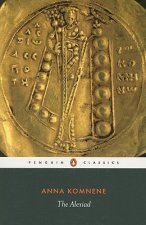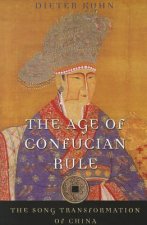
Kód: 04613170
Great Hill Stations Of Asia
Autor Barbara Crossette
For the European and later the American colonial soldier, the civil administrator and his clerk, the merchant, the missionary, and the families who followed them east of Suez, daily life was less a matter of advancing the glory of ... celý popis
- Jazyk:
 Angličtina
Angličtina - Väzba: Brožovaná
- Počet strán: 268
Nakladateľ: Basic Books, 1999
- Viac informácií o knihe

Mohlo by sa vám tiež páčiť
-

Daughters of Zion
23.69 € -3 % -

Communication History in Canada
94.98 € -

Wake
19.40 € -

Astro-characters
16.54 € -4 % -

Handbook of Research on International Advertising
61.48 € -9 % -

Israel's Years of Bogus Grandeur
31.35 € -

Herbert Hoover, Unemployment, and the Public Sphere
81.19 €
Darčekový poukaz: Radosť zaručená
- Darujte poukaz v ľubovoľnej hodnote, a my sa postaráme o zvyšok.
- Poukaz sa vzťahuje na všetky produkty v našej ponuke.
- Elektronický poukaz si vytlačíte z e-mailu a môžete ho ihneď darovať.
- Platnosť poukazu je 12 mesiacov od dátumu vystavenia.
Viac informácií o knihe Great Hill Stations Of Asia
Nákupom získate 54 bodov
 Anotácia knihy
Anotácia knihy
For the European and later the American colonial soldier, the civil administrator and his clerk, the merchant, the missionary, and the families who followed them east of Suez, daily life was less a matter of advancing the glory of God or empire than a battle for survival against sunstroke, dysentery, cholera, malaria, and a host of other unnamed deadly fevers as well as little-examined, vague indispositions that in hindsight would probably be diagnosed as clinical symptoms of depression. Later, medical scholars coined a phrase for it: "tropical fatigue." Pity John Ouchterlony. By the time they brought him to the healing hills, it was too late. On April 29, 1863, Lieutenant Colonel Ouchterlony of the Royal Madras Engineers died of "jungle fever brought on by exposure while in the execution of his duty," says a memorial plaque--one of many--at St. Stephens Church in Ootacumund, a British colonial town in the Nilgiri Hills of southern India. Others were luckier. They got to Ooty in time and survived the perilous East, at least for another season, by rising above its pestilential lower reaches. On litters, in chairs, on ponies, by foot if they were able, Europeans in Asia nearly two centuries ago began climbing into the hills in search health, relaxation, and sometimes their sanity.They called the refuges they created--little European towns carved from rocky mountainsides or nestled in the meadows of high plateaus--"hill stations." Colonialism came and went, but the hill stations remain. They are no longer European, but most have not lost their unique appeal. After all, the plains still fry in the sun and the cities of Asia have only grown larger, noisier, and more polluted. New generations of Asians are rediscovering hill stations and turning them into tourist resorts with luxury hotels and golf courses. Hill stations still cling to their history, and the story they tell reveals a lot about how colonial life was lived. They also have a future, if environmental damage and overpopulation do not destroy the forested hills and mountains that gave them their spectacular settings and pleasant climates.Hill stations began to appear, albeit at different times in different places, when the era of initial exploration and conquest was waning, wives and families arrived in substantial numbers, and life had become a bit more routine. By then, colonial societies could take stock of their longer-term needs and, regrettably, look for ways to build walls around themselves to shut out native populations. Through the age of European mercantile empire building and colonialism that began with the turn of the sixteenth century, hill stations were largely a nineteenth-century phenomenon. Most were established between 1820 and 1885, though the Dutch were early with Bogor in Indonesia and the French came later with Dalat in Vietnam and the Americans with Baguio in the Philippines. The British themselves built a second generation of hill stations after World War I in southeast Asia.In early 1997, Barbara Crossette set off on a journey of several months to see Asia anew through its great hill stations, moving from mountain to mountain from Pakistan, across India, to Sri Lanka, Burma, Malaysia, Vietnam, and the Philippines. A year earlier, Crossette had made a trip to the highlands of Indonesian Sumatra, the land of the Minangkabau and Batak people, where the idea of this kind of journey came together.
 Parametre knihy
Parametre knihy
Zaradenie knihy Knihy po anglicky Humanities History Regional & national history
21.64 €
- Celý názov: Great Hill Stations Of Asia
- Autor: Barbara Crossette
- Jazyk:
 Angličtina
Angličtina - Väzba: Brožovaná
- Počet strán: 268
- EAN: 9780465014880
- ISBN: 0465014887
- ID: 04613170
- Nakladateľ: Basic Books
- Hmotnosť: 309 g
- Rozmery: 202 × 129 × 16 mm
- Dátum vydania: 31. May 1999
Obľúbené z iného súdka
-

Hundred Years' War on Palestine
13.27 € -23 % -

Ethnic Cleansing of Palestine
12.86 € -24 % -

History of Japan
16.33 € -19 % -

Ten Myths About Israel
13.57 € -14 % -

Strange Death of Europe
15.21 € -21 % -

Decline and Fall of the Roman Empire
5.91 € -21 % -

Secret History
13.78 € -21 % -

God's Playground A History of Poland
68.63 € -

Mayflower
15.72 € -23 % -

How to be a Victorian
14.39 € -23 % -

Plantagenets
13.27 € -29 % -

General's Son
20.21 € -4 % -

Iran: A Very Short Introduction
11.53 € -19 % -

Temples of Karnak
153.40 € -

Cuneiform
11.12 € -23 % -

Twenty Years A-Growing
10.10 € -22 % -

History of Witchcraft in England from 1558 to 1718
18.99 € -

China in Africa
37.37 € -

Islandman
11.12 € -19 % -

Bohemian Paris
16.54 € -18 % -

Alexiad
17.76 € -20 % -

Lancaster And York
22.87 € -

Modern France: A Very Short Introduction
11.53 € -19 % -

Inside Hitler's Greece
21.03 € -20 % -

Diana: Her True Story - In Her Own Words
11.02 € -23 % -

The Fourth Turning
19.60 € -6 % -

The Oxford History of Ancient Egypt
17.97 € -19 % -

Churchill: The Power of Words
15.11 € -22 % -

Palestine
20.32 € -19 % -

Korean History in Maps
27.98 € -10 % -

Great Gatsby (Wisehouse Classics Edition)
16.13 € -37 % -

Viking Way
46.16 € -7 % -

The Thirteenth Tribe
12.55 € -

My Promised Land
18.48 € -

Vanished Kingdoms
18.78 € -22 % -

Age Of Revolution
16.54 € -23 % -

Life and Death of Anne Boleyn
22.97 € -

Coming of the Third Reich
18.68 € -23 % -

Children of Ash and Elm
18.68 € -23 % -

Europe Between the Oceans
34.21 € -7 % -

Socialism Betrayed
19.50 € -19 % -

303 Squadron
19.40 € -17 % -

Ancient Celts, Second Edition
26.75 € -19 % -

Dancing in the Glory of Monsters
15.82 € -22 % -

Battle of Britain: Luftwaffe Blitz (Images of War)
25.83 € -1 % -

Age of Confucian Rule
35.94 € -

Beyond Band of Brothers
16.54 € -23 % -

Benjamin Franklin
18.78 € -12 % -

On China
17.25 € -20 %
Osobný odber Bratislava a 2642 dalších
Copyright ©2008-24 najlacnejsie-knihy.sk Všetky práva vyhradenéSúkromieCookies



 21 miliónov titulov
21 miliónov titulov Vrátenie do mesiaca
Vrátenie do mesiaca 02/210 210 99 (8-15.30h)
02/210 210 99 (8-15.30h)